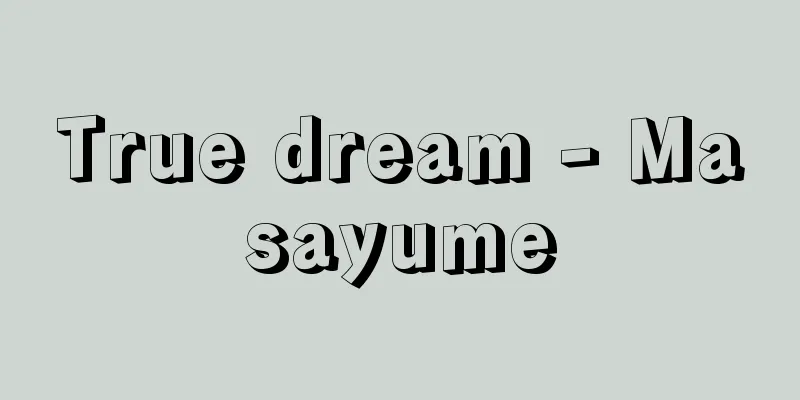Red jellyfish - Red jellyfish

|
A jellyfish belonging to the phylum Coelenterata, class Scyphomedusa, order Entagastromedusae, family Oxymedusae. The umbrella is rich in soft agar, slightly flattened rather than hemispherical, and usually 9-12 cm in diameter, sometimes even larger. Sixteen prominent broad brown stripes are arranged radially on the outer surface of the umbrella, but sometimes these stripes are thin and inconspicuous, and in some cases they have almost disappeared. The tentacles are long and dark brown, and there are usually 40 on the edge of the umbrella, but in large ones there can be as many as 56. There are four oral arms, which are very long and ribbon-like, light brown in color. The nematocysts on the tentacles are very poisonous, and they use them to catch and eat small fish and other prey. If a human touches it, they feel a strong pain, and fishermen and people who swim in the sea dislike it. For these reasons, this species has been well known for a long time, and is called by various nicknames in various places. These include the Rentai-Kikurage (Lenticular Jellyfish) because the pattern on its outer umbrella resembles that of the regimental flag of the former Japanese military, the Aninaga-Kurega (Legacy Jellyfish) because of its long oral arms, and the Hakuon-Kurega (White Jellyfish) because the nematocysts on its tentacles dry out and turn into fine powder that, when ingested by humans, irritates the mucous membrane and causes sneezing. In the Seto Inland Sea, it is called Akanko and used as fishing bait. This jellyfish is widely distributed along the coast of Japan from Hokkaido to Okinawa, and is also known from the Philippines, the North Pacific, and the west coast of North America. [Mayumi Yamada] [Reference] |It has many common names, such as the Rentai Jellyfish, the Long-legged Jellyfish, the White Jellyfish, the Red Jellyfish, and the Tapestry Jellyfish. © Underwater Fort Enterprise, Isamu Soyama "> Red jellyfish (ecology) Source: Shogakukan Encyclopedia Nipponica About Encyclopedia Nipponica Information | Legend |
|
腔腸(こうちょう)動物門ハチクラゲ綱旗口(はたくち)クラゲ目オキクラゲ科に属するクラゲ。傘は柔らかい寒天質に富み、半球よりやや扁平(へんぺい)で、普通、直径9~12センチメートル、ときにはさらに大形になることがある。傘の外表面上に、16本の顕著な褐色の太い縞(しま)が放射状に並んでいるが、これらの縞はときには薄くて目だたぬこともあり、また場合によってはほとんど消失してしまっていることもある。触手は長く濃褐色で、傘縁に普通40本みられるが、大形のものでは56本に達することもある。口腕(こうわん)は4個、淡褐色できわめて長くリボン状である。触手の上の刺胞(しほう)の毒はきわめて強く、その触手で獲物の小魚などをつかまえて食べる。人間がこれに手を触れると強い痛みを感じ、漁師や海水浴の人々などに嫌われる。このようなこともあって本種は古くからよく知られ、また各地でいろいろな俗称でよばれている。外傘の模様が旧日本軍の連隊旗の模様に似ていることからレンタイキクラゲ、口腕が長いのでアシナガクラゲ、触手の刺胞が乾燥して微粉となり人間の鼻に入ると粘膜を刺激してくしゃみが出るのでハクションクラゲ、などがそれである。また、瀬戸内海ではアカンコとよばれて釣りの餌(えさ)に用いられる。このクラゲは北海道から沖縄まで日本の沿岸に広く分布しており、またフィリピン、北太平洋、北アメリカ西岸などからも知られている。 [山田真弓] [参照項目] |レンタイキクラゲ、アシナガクラゲ、ハクションクラゲ、アカンコ、サナダクラゲなど俗称が多い©水中フォート・エンタープライズ 楚山いさむ"> アカクラゲ(生態) 出典 小学館 日本大百科全書(ニッポニカ)日本大百科全書(ニッポニカ)について 情報 | 凡例 |
<<: Red clover - あかろーばー(English spelling) red clover
>>: Akakura [Hot Springs] - Akakura
Recommend
Shasekishu - Shasekishu
A collection of Buddhist tales from the Kamakura ...
From the dust
A term used in the music of Nagauta. "Chiri&q...
ratio decidendi
…Therefore, in order to know the concrete meaning...
control
…It is a musical term derived from the Latin altu...
Inpon - Inpon
(1) Drama from the Jin and Yuan dynasties in Chin...
mot savant (English spelling) mot savant
… Finally, the majority of French vocabulary is d...
Catechesis - Catechesis
A book used for Christian faith education. In Engl...
Astragalus
…It is also called a dice, and corresponds to the...
Genus: ant
…The pain caused by the sting of a fire ant is us...
Antonello da Messina
Around 1430-79 Italian painter. Except for a few d...
Offer - Offer
… In the first half of the 7th century, Cadwallon...
Caracci, Agostino
…An Italian family of painters. They overcame Man...
Double Truth
The view that emerged in late scholasticism, which...
Brier
...When the branches and leaves are growing, wate...
activevoice
For example, in the English sentence "John k...









